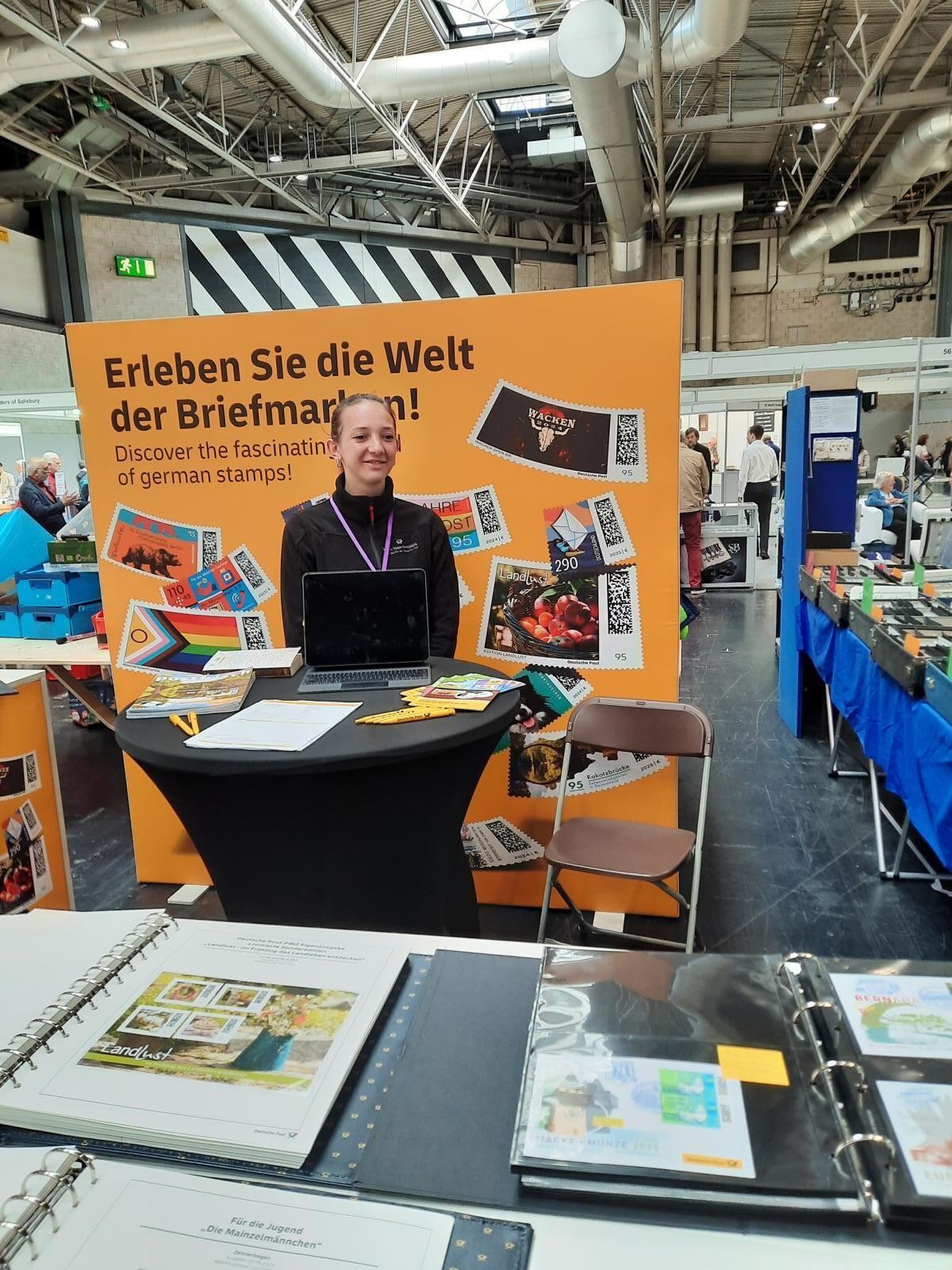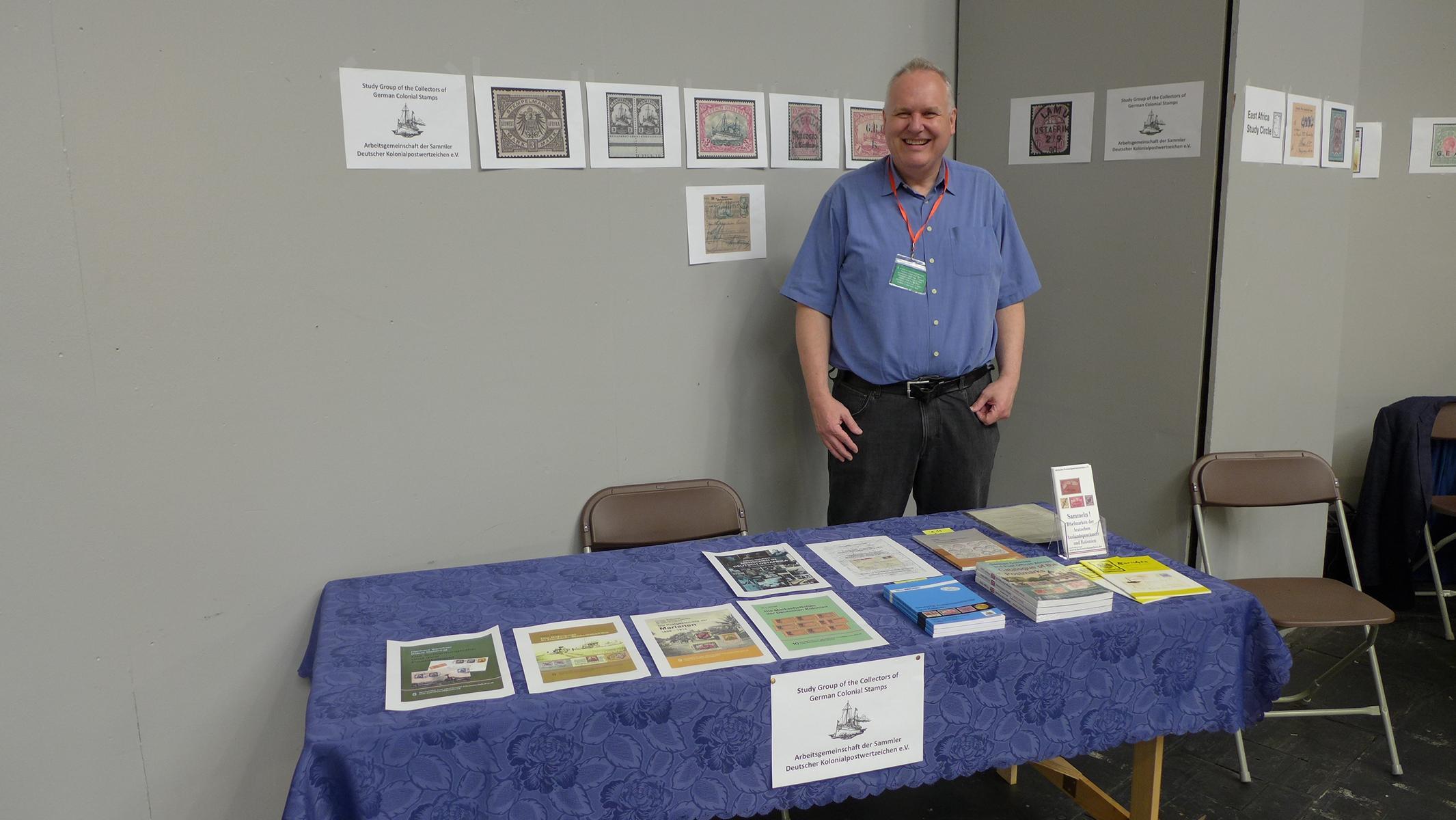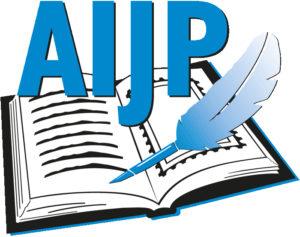(wm-pcp) Unlike in February 2022 in London, when a storm literally rained on the parade for many philatelists, the weather was kind to the British this time. The unusually warm temperatures in May were perfect for the event, which took place from 7 to 11 May and was well worth seeing. It was especially easy and quick to reach at the huge N.E.C. (National Exhibition Centre) near Birmingham, whether coming from the airport, railway station or motorway. The EuroPhilEx could hardly have been better located.
Nevertheless, visitor numbers remained modest. This was particularly evident on the first day, when the organiser offered a special admission price (20 pounds for the first hour, then ‘only’ 10 pounds), although visitor numbers increased slightly on the following days. The highlights were undoubtedly the stamps on display and the more than 100 literary exhibits, which could be viewed in 2,000 frames and in the reading room. Expert commentary was provided by the Stuart Russiter Trust and the AIJP. Many of the exhibits were well worth a closer look and attracted attentive ‘scholars’, and the high standard was reflected in the medals awarded by the jury of over 40 experts from Europe and the USA. Thirty-seven commissioners had transported the exhibits from many countries, setting them up on time.
According to the rather slim exhibition catalogue (98 pages, 22 of which are advertisements!), the trade fair featured 51 stands representing professional dealers and postal companies from Great Britain, India, the Isle of Man, and Germany. However, Deutsche Post only took orders at its small stand and did not sell anything on site. The reason for this was the enormous bureaucratic effort involved in importing and exporting, which was hardly acceptable. Brexit also left its mark, as apart from Köhler/Corinphila (GPN) and one Italian stand, all of the other dealer stands were firmly in the British ‘sphere of influence’, including those from Australia, India and the USA. Unlike in the past, continental Europe was hardly present. Even the Royal Mail stand often stood empty due to a lack of demand.
Of course, one could add to these impressions. For example, the author thought the prevailing price level was quite high, and some of the dealer stands were more reminiscent of a flea market. There was also a lack of shuttle buses, which were few and far between — if they ran at all. However, the atmosphere was good, and the team around event manager Jon Aitchison was always extremely friendly and helpful. The prices for food and drink were not comparable to those in Germany, which was to be expected. Overall, the exhibition was well organised and ran smoothly.
The leading English clubs and associations were certain that they would host another international exhibition in five years’ time, as they had done in the past, and promote philately in Great Britain. This would be desirable — who knows? Perhaps Brexit will already be history by then. Philately certainly deserves it.
Translated with DeepL (www.deepl.com)

Small but mighty! Deutsche Post (Photo: Wolfgang Maassen).

Harald Krieg represented the ArGe der Deutschen Kolonialpostwertzeichensammler (the Working Group of German Colonial Postage Stamp Collectors), the only German group involved in the project (Photo: Wolfgang Maassen).

